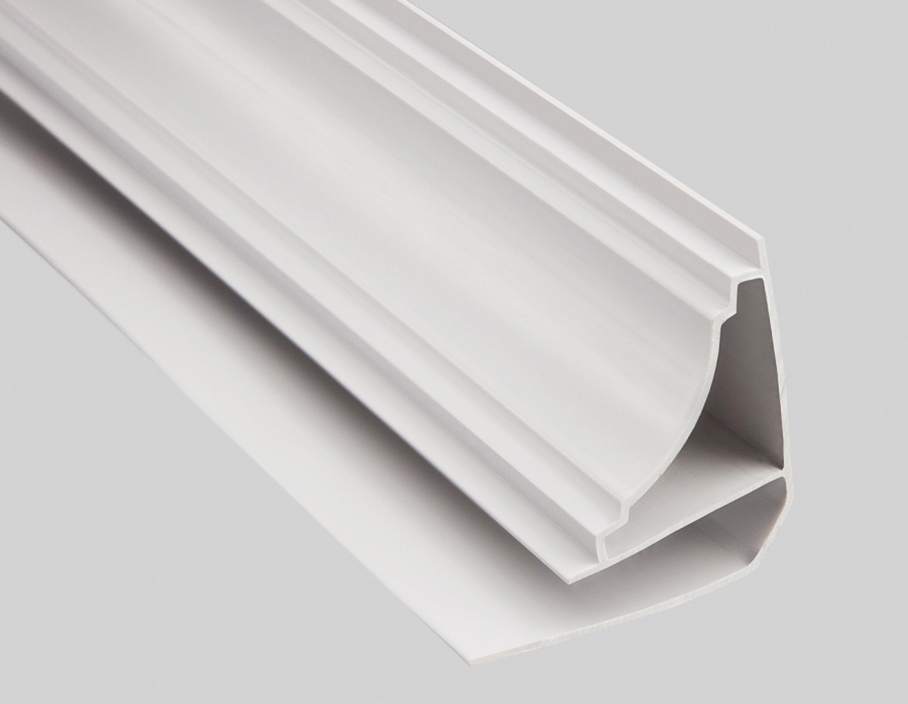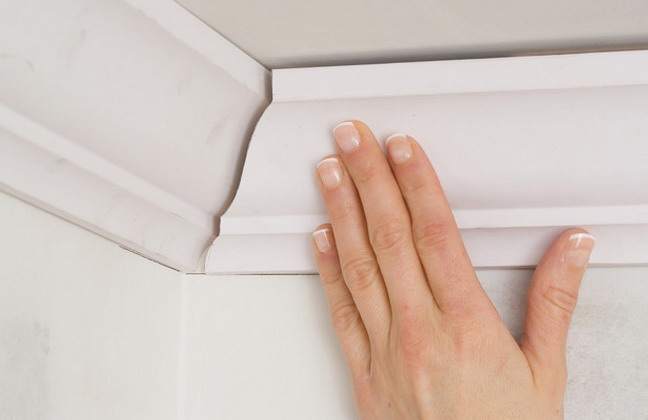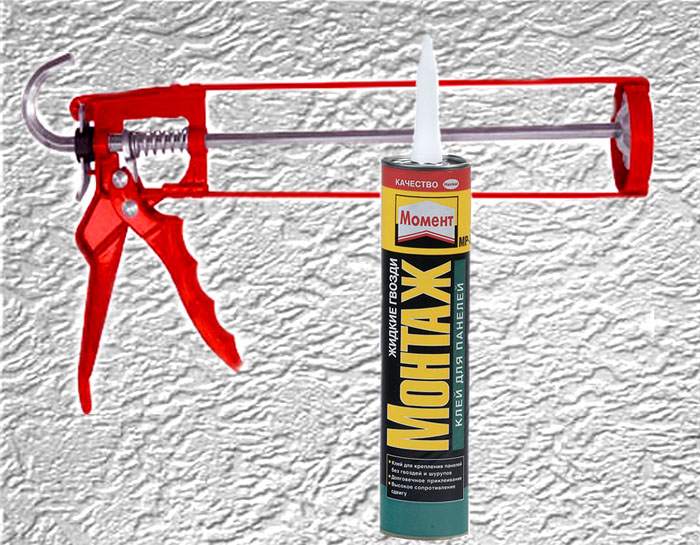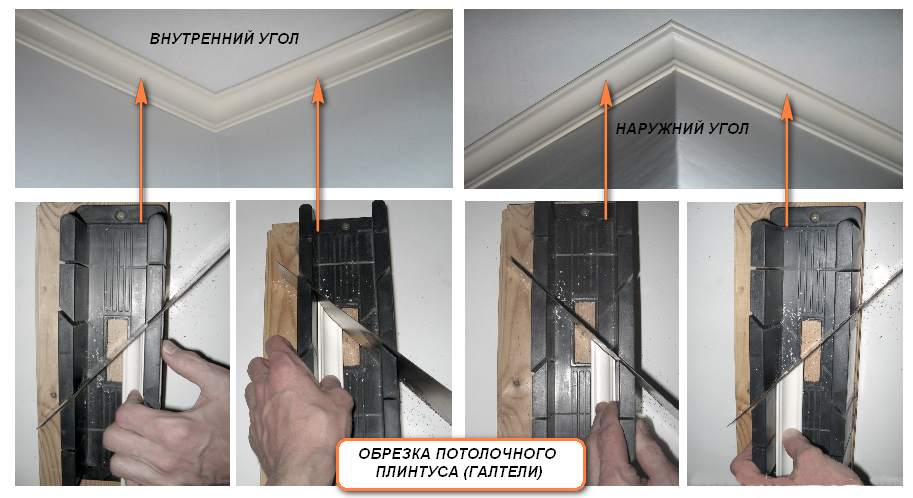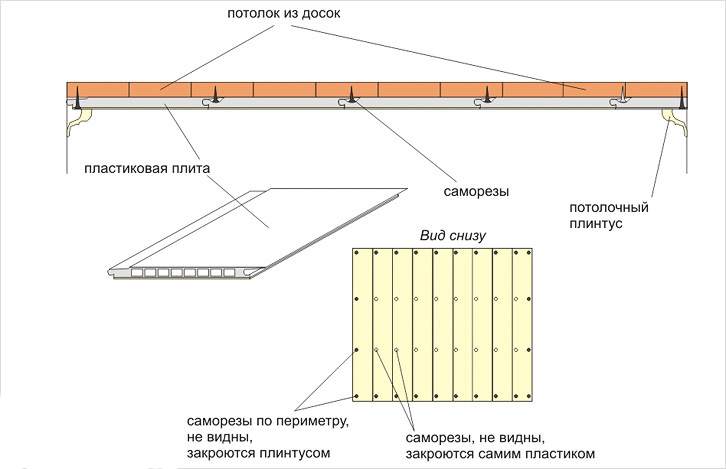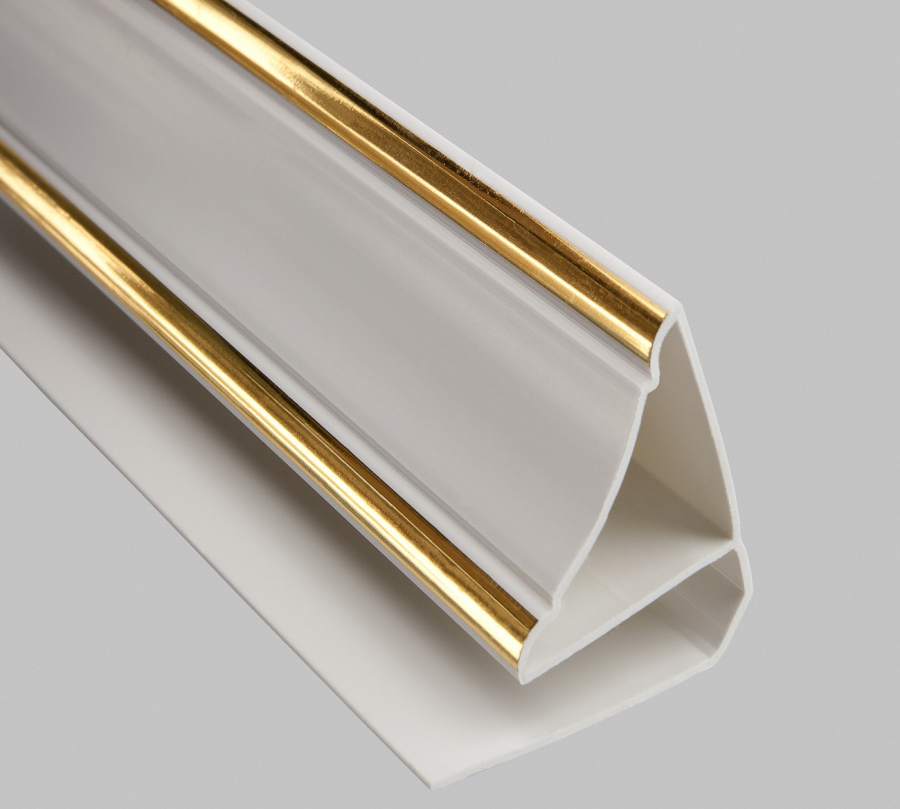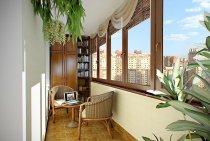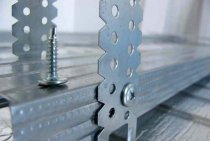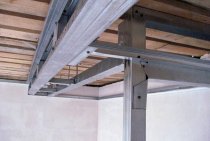On your marks! Attention! The renovation has begun! Usage PVC panels in the repair of walls and ceilings, it increases its speed by an order of magnitude. However, this does not mean that the quality will suffer. The choice of high-quality material, the consistent implementation of the technological process and a bit of effort will lead to an excellent result. The only negative is the inability to perfectly connect the ceiling and wall, as when plastering followed by painting. You can turn it into a plus if you use a plastic ceiling plinth. It will not only cover an unpresentable gap, but with the right choice, it will noticeably emphasize the chosen design.
Types of ceiling moldings
Plinth is otherwise called a baguette, frieze, fillet and is used to mask and decorate corner joints:
- ceiling - wall;
- floor - wall;
- wall is a wall.
When choosing it, they are guided by the color of the panels that will decorate the walls in the room. Whether it is contrasting or similar to the palette of the general solution is a matter of taste. In stores you can see friezes from classic white to poisonous variegated colors, with and without drawings, smooth and textured. If you wish, you can even order them according to your own sketch.
There are two types of plinths:
- Baguette (injection, extruded, laminated).
- PVC profile.
Injection friezes are decorated with relief decor. Extruded "drawn" recesses. Baguettes are attached to the glue after finishing the wall. Flat or triangular, they are a decorative element.
PVC profiles are designed somewhat differently and represent a triangular section plinth plus an additional U-shaped profile, equal in width to the thickness of the PVC panels. It is both a finish and a panel fastening detail. First, a plinth is attached to the wall, and then the ends of the plastic panels are inserted into its groove.
They are glued in accordance with the finishing plane: if the ceiling is finished with PVC plates, the fillet turns to the side with the profile, if the walls are down. It happens that plastic trim is provided both there and there. In this case, the ceiling is first drawn up, then the plinth is fastened to finish the wall.
There is a collapsible plinth. First, its plastic profile is mounted, then panels are placed on the wall. And in conclusion, a decorative detail snaps.
What you need to install the skirting board on the walls
Before you start working with the ceiling and walls, you should calculate how much and what you need. And you will need the following:
- plinth;
- accessories for it;
- glue;
- hardware.
A tape measure measures the length of the sections where the plinth will be laid on the wall. Its standard length is 3 or 6 meters. The measurements obtained are divided by the length of the selected frieze (3 or 6), and the result is rounded up. This figure will mean the required number of pieces.
It is rather difficult to precisely connect the fillet at the junction, so it is worth buying plastic corners and inserts. With their help, it is easier to connect the skirting board in the inner and outer corners of the walls or to increase the length.
For fastening a baguette to a wall, polymer glue is more often used (Moment, Eco-naset, Titan), liquid nails, and putty.
Tip: it is better to check the type of adhesive required for attaching the baseboard to the hardware store where you will buy it.
Characteristics of suitable adhesive compositions:
- Glue "Moment". Seizes quickly, but when it hits the front surface causes irreparable defects.
- "Eco-naset", "Titan". Hardens more slowly, does not require additional ventilation.
- "Liquid Nails".The composition is based on an organic solvent, hardens instantly, but requires thorough ventilation of the room after application. It is used in rooms with high humidity, is not afraid of high / low temperatures.
- Acrylic "Liquid nails". This glue is environmentally friendly, dries slowly and does not tolerate freezing.
- Special putty. It is used as an adhesive base for a false plinth.
putty you can cook it yourself by adding PVA glue (4: 1) to the finish mixture.
For fixing polyvinyl chloride fillets, screws or building brackets are used, since the load on them is much higher.
Ceiling baguette installation technology
The method of mounting the ceiling plinth will depend on its type.
Surface plinth
The decorative fillet, as mentioned, is glued to the wall on already installed panels. The fastening algorithm is as follows:
- Trim the edge of the skirting board strictly at an angle of 45° relative to the front side.
- Apply the adhesive evenly to the inner surfaces.
- Stick to the wall, starting from the far corner of the room.
- Press firmly along the entire length.
- Carefully remove any excess adhesive with a damp cloth.
- Allow time to dry.
- Mask the remaining gaps with putty or silicone sealant.
PVC skirting board
Work begins with the installation of the frame on the entire wall. For it, wooden slats or metal profiles are used. The bars are attached to the surface perpendicular to the direction of the plastic panels in increments of 40–50 cm.
On flat walls, profiles can be fixed with dowels, however, such surfaces are rare, therefore, more often the product is fixed with screws, bringing it into a plane using a level. In failed places, gaskets are made or wedges are hammered to ensure the strength of the frame.
The extreme rails adjacent to the corner joints will be the basis for attaching the ceiling plinth. By the time of gluing, one of the surfaces (wall or ceiling) must be finished.
The plinth for PVC panels is fixed with self-tapping screws or building brackets. At the joints - in the inner and outer corners - special inserts sit on the glue, which greatly simplify the installation, making it more accurate.
Further installation of the panels will no longer be difficult: the plinth guide groove will not allow them to go to the side.
Fix the plinth just below the ceiling, then there will be room for the diode tape, which will act as additional lighting on the walls.
Advantages of PVC skirting boards
The advantages of such PVC products include:
- Ease of installation. Even a novice master will cope with such work. When you want to change the design, it is enough to dismantle the old panels and fix new ones on the old frame on the wall.
- Service life is limited only by mechanical damage. Plastic is not affected by temperature, water and light.
- Plastic is easy to care for. It does not absorb dirt, so a soapy solution and a sponge are enough for washing.
- The material from which the plinths are made is environmentally friendly. It can be used to decorate the walls of children's rooms.
- The choice of colors and textures is huge. You can choose a palette for any stylistic decision.
- The speed of repair and construction when using PVC skirting boards and panels increases significantly. Decreases proportionately garbage collection work.
In conclusion, we can add that repairs made using PVC panels and skirting boards will save a lot of time for other, more interesting things. And since plastic lasts for a very long time, the next change in wall and ceiling decor will depend only on your desire.
